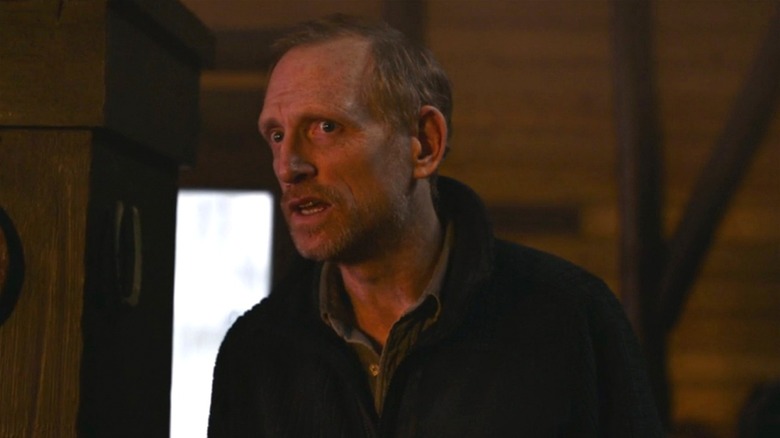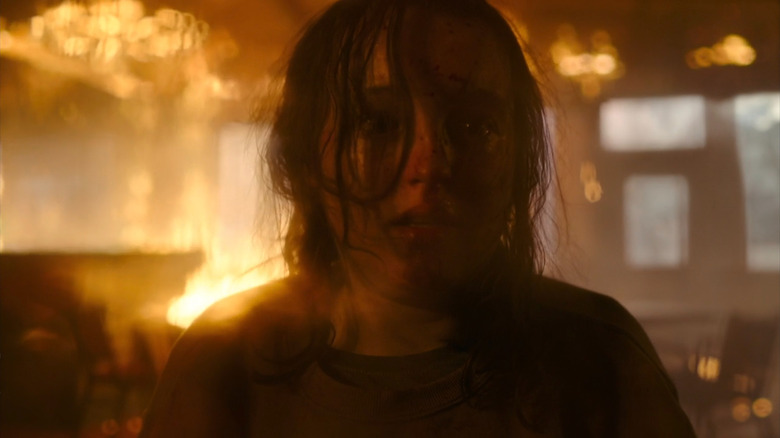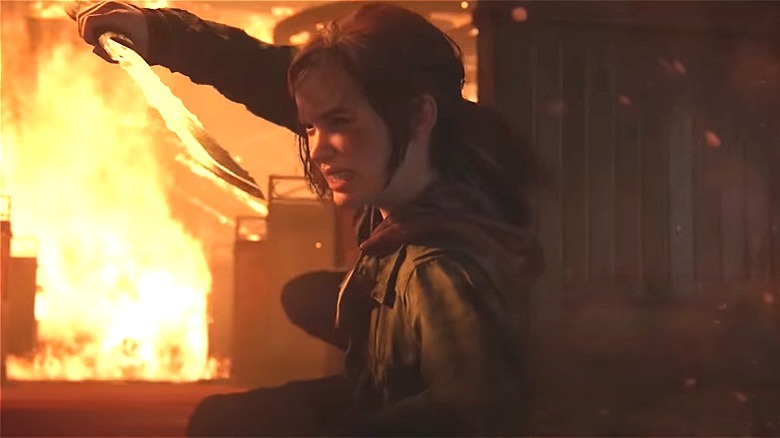A Pivotal Last Of Us Episode 8 Moment Features A Visual Gamers Will Recognize
Contains spoilers for "The Last of Us" Season 1, Episode 8 — "When We Are In Need"
One of the greatest aspects of adapting a video game is that there is plenty of opportunities for references, Easter eggs, deep cuts of lore, and subtle nods to those that have played through the source material. The exceptionally well-received "The Last of Us" on HBO has done a fantastic job so far of turning the video game into something that is easily digestible for non-gamers while at the same time packing almost every scene with objects, detail, and even camera angles that will be immediately recognizable for people who have played through the hit game from Naughty Dog.
From the very first episode of "The Last of Us," video gamers could almost draw a direct parallel between scenes on the show and those from the game, which almost become perfect mirrors of each other. This highlights just how much attention to detail the showrunners of "The Last of Us" have for the video game, which makes perfect sense since game creator Neil Druckmann is also involved with the show. The most recent episode of "The Last of Us" sees Ellie (Bella Ramsey) run into a group of cannibals, and the HBO show once again reflects a scene from the game down to some very subtle minutia.
Ellie's fight with David is just like the boss fight in the video game
Episode 8, titled "When We Are in Need," begins with Ellie trying her very best to nurse Joel (Pedro Pascal) back to health after Joel suffers from an abdominal wound. While out hunting, Ellie runs into David (Scott Shepherd), who at first seems to be kind and welcoming. Unfortunately for Ellie, David realizes that Joel killed one of his people, and that Ellie is protecting him. This creates an uneasy tension in the rest of the episode, which is only augmented further when it is revealed that David and his group of survivors are cannibals, though only David and a few of his trusted lieutenants know this horrible truth.
David eventually is able to capture Ellie, and he extends an invitation for Ellie to join him by his side and rule the group of survivors. Ellie, ever astute, realizes what kind of person David is, and flat-out refuses him. This results in an angry and explosive outburst from David, who intends to chop Ellie into "little bits" and consume her. Luckily, Ellie is able to parlay her dormant Cordyceps bite into a distraction by claiming infection, which provides enough time for her to mortally wound David's follower James (Troy Baker). This leads to a direct fight between David and Ellie, one that echoes a scene from the game almost perfectly.
The blood on the camera is the same in both the game and series
On "The Last of Us" TV series, David pursues Ellie through a locked building, though Ellie certainly puts a time limit on this altercation by tossing a flaming log, which ignites a set of curtains. Though David seems relatively unfazed by this, his focus is instead on Ellie, which becomes disgustingly apparent when he tries to assault her. As David pins down Ellie, Ellie is able to deliver a grievous blow to David. From there, Ellie gets on top of David and hacks away with furious abandon as blood splashes alongside the sound of exasperated slashing. For those that have played the video game, this scene is directly lifted from the game, complete with effects and camera angle, as one can see on YouTube.
Although Joel interrupts Ellie's frenzied blade work in the game, it's different on the show, where she stops of her own volition, and due to exhaustion. During the start of her attack in both show and game, a visual effect is utilized that showcases just how much anger and rage Ellie unleashes on the cannibalistic cult leader. This special effect is the blood splash on the camera after Ellie's initial salvo, which is perfectly recreated on the show. Once again, this highlights just how much respect the HBO show has for its source material, and yet another example meant to delight long-time "The Last of Us" gamers.


